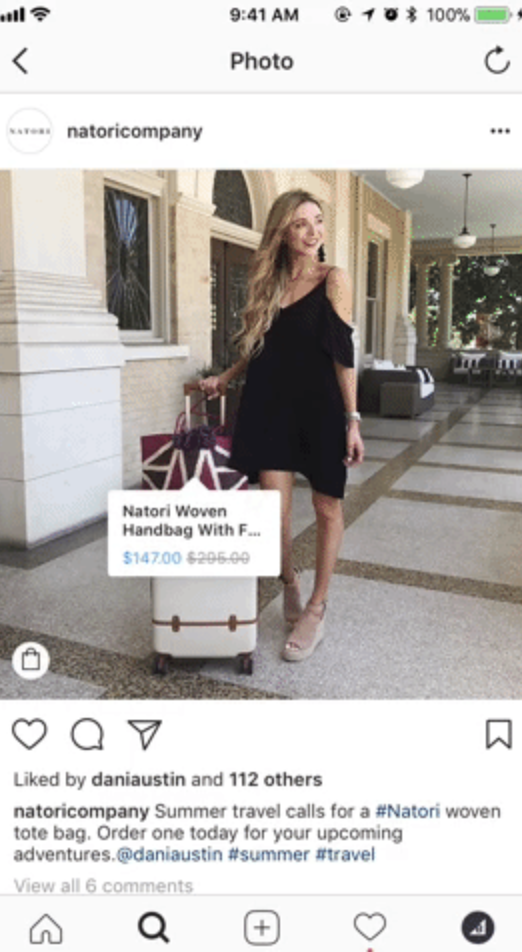Making money on Instagram — even if you’re not quite an influencer

Monetizing your Instagram account may be an excellent way to build some side income—whether that’s drawing attention to an outside business or leveraging your talent for food photography to hook some affiliate deals.
Not sure how to get started? Here’s a look at some ways to monetize, outside of slinging FitTea for ungodly sums of cash.
How to make money on Instagram
Start building a solid following
Successful marketing on social media tends to fall into proportion with your follower count. That’s not to say that you need to have this massive following. But you’re not going to sell anything if no one can find you. Sorry.
So, assuming you’ve got your Instagram following — an engaged audience that likes what you’re putting out there — it’s time to figure out how to profit off of your influence.
The next step is learning what your audience wants to see, and either promoting your products to that audience or connecting with brands that this group already likes.
The third ingredient is pulling those elements together in a way that feels authentic to everyone involved.
That means you, your followers, and any brands you work with. It’s a tricky balancing act.
Become an affiliate
If you have an account and like talking about products, becoming an affiliate might be a good move on your part.
Those in the fashion, beauty, or lifestyle space might want to go this route, as they may be more inclined to talk about products naturally.
Affiliates aren’t exactly influencers, though there may be some overlap. Your primary goal here is making sales for the brands you work with, and you do have to apply for this opportunity.
The easiest way to find potential partners is by working with a third-party affiliate marketplace — where you can pick and choose from a selection of partnering brands.
Some of the more popular affiliate platforms include Shopify, ShopStyle Collective, Amazon, Skimlinks, among others.
Generally speaking, you’ll earn money based on how many times someone uses your unique link or code to buy a product. The code allows advertisers can to monitor performance and pay out accordingly.Here’s an example:

While some people make major cash doing affiliate marketing, it’s generally more side hustle than actual career.
A few tips:
- Only work with brands you’d actually use
- Stay away from aggressive sales pitches
- Create sponsored posts for your affiliate content
- Don’t promote the product in every post.
- Mix affiliate content into your feed along with your usual content
Open your own store

While most earning opportunities involve working with other brands, an Instagram store of your own presents an opportunity to make some sales.
This might be a good bet if you’re a creator in one way or another—that might mean you sell inventory that you’ve purchased, digital photos, services, or fine art.
We should mention that Instagram has some requirements in place for potential sellers. You’ll need to convert your account into a business account, and platform prefers users to sell physical goods.
So — artists selling reproductions should offer physical prints or add their designs to tote bags, mugs, or apparel.
Often, smaller brands like indie designers and artists use the platform both as a selling platform and as a source of traffic for an external site.
The benefit of selling your own stuff is, you don’t have to work awkward affiliate codes into your posts, and all the work you do reflects your brand.
The downside is, it may often be more work than working with an affiliate or attempting to get brand sponsorships — bigger brands come with more name recognition, so you might earn more followers by choosing the right brand.
Spend time on your brand aesthetic
Whether you’re promoting your own artwork or a collection of affiliate products, you need to curate photos that both represent your brand and show off the product you’re trying to sell.
Professional-looking photos are a must here, especially when you consider that 67% of customers consider detailed images more valuable than positive customer ratings. Given the visual aspect of the platform, photos should be colorful, appealing, and indicative of your brand’s aesthetic.
With that in mind, you will also need to make sure all photos work together in a larger context.
Look for collaboration opportunities
Another way to increase your reach is by working with others. Collaboration might mean working with a brand or an influencer, but it also could mean connecting with other creators in your niche.
Engage with other users
The Instagram algorithm looks at engagement as a way to determine how many people to show your content to. With that in mind, consider hosting contests, and making sure you reply to comments and likes, as well as liking and commenting others’ posts.
Additionally, it’s smart to mix up your content. Try sharing videos and stories to engage your fans.
Get a handle on hashtags
While Instagram is all about creating a visual impact, you can’t forget about the caption and the hashtags inside.
Use tools like TagBlender, Hashtagify.me, or Hashtagforlikes to uncover possible tags to add to your pages.
One thing to note, though, you’ve got to shake up your tags. Keep using the same hashtags for every post and Instagram may flag your content as spam, which of course, will have a negative impact on visibility.
Conclusion
While you might think of Instagram as just a hobby, it’s worth looking at its value as a source of income. If you already have an engaged following, you’re doing something right.
The key here is figuring out where, exactly, your opportunities lie. If you’re more of a social media presence than a creator, it may be worth it to pursue brand relationships.
Those focused on selling products or using the platform to promote something else should turn their efforts toward engagement and using the right keywords and hashtags—three simple things that can help users grow their following.

Comments
Post a Comment